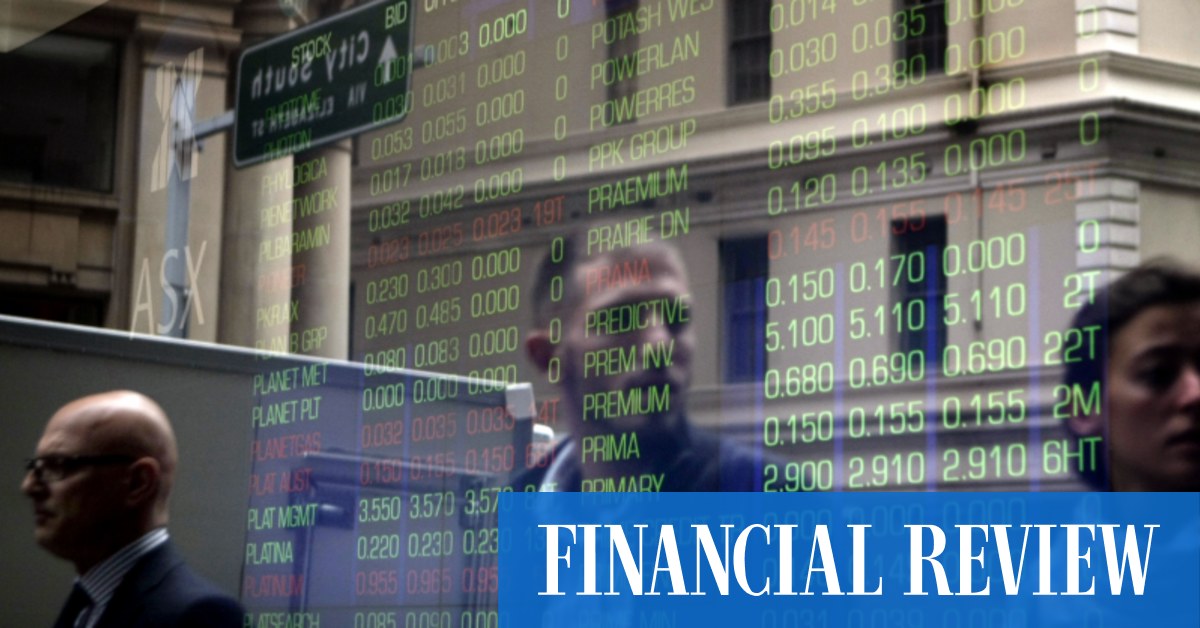Private equity, venture capital and blockchain all have a place in gift portfolios
The school is out for the summer, but the university scholarships never stop working. Many legacies had a grand financial year that ended in June 2021, but with inflation plummeting, the outlook for 2022 is more uncertain.
Amy Falls became chief investment officer at Northwestern University’s $ 15 billion endowment in May 2021, the first woman to hold the position. The portfolio helps finance university operations, including financial support, faculty salaries and research and athletics.
Falls, 58, arrived in Northwestern from Rockefeller University, a $ 2.5 billion biomedical research institution in New York, where she had been a CIO since 2011. Her performance was outstanding: the Rockefeller Scholarship averaged 8.4% annually over five years. year, and 9.5% for the 10 years up to 30 June 2020, her last full year at the helm, compared to an average of 5.1% and 7.5% for all university funds, respectively.
Falls, a former partner of Morgan Stanley, is a board member of the Ford Foundation and the Harvard Management Company, which manages the endowment for Harvard University. She runs the Northwestern Scholarship with a staff of 23 from an office on the edge of campus to the private school in Evanston, Ill.
In a recent interview, Falls discussed her outlook for the market, why it is important to include private equity and venture capital in the portfolio, and her mission for endowment. An edited version of the conversation follows.
Barrons: The stock market has been whipped this year. What will the second half bring?
Amy Falls: This was a predictable correction. The valuations were too high, given where inflation is. I have also long felt that interest rates were too low. The political levers that were pulled hard enough to tackle Covid created a massive rally, but the valuations were not sustainable. In some ways, it is healthy to have such a correction.
We are seeing a normalization of interest rates; 3% to 4% in 10 years [Treasury] is where we need to be. The real interest rate must be positive. You should get something to be a saver. This is detrimental to income inequality, because older people and people with lower incomes should have a non-equity tool to collect or protect their savings.
Is the economy in a recession, or on its way there?
A recession is a significant risk. You have fiscal tightening in the roll-out of stimuli. You have money tightening and inflation. All three things happen. Inflation means you can not stop the monetary correction.
“Everyone has the same tailwind advantage of large venture capital investments. I felt we should take some chips from the table.”
There are not as many degrees of freedom as in the zero-inflation era we had lived in. The good news is that there is strong employment. There is wage growth, which is probably OK if it does not get out of control. The risk of a recession is quite high, especially six months from now.
During the 12 months to June 30, 2021, the Northwestern grant increased 42.2%, beating the average gain of 30.6%. This development was helped by the fund’s venture capital investments, up 115%. The show was mostly your predecessor. What do you do differently, if anything?
Asset allocation is not something I would change radically. [The largest positions as of May 31 were 34.6% in private equity and venture, 21.4% in long public equities, 14% in absolute return, and 14% in real assets.] A return of 42% sounds good. But everyone has the same tailwind advantage of large venture capital investments. I felt we should take some chips from the table. So we made a secondary sale of private [holdings in nonpublic companies] in the fall, and raised money on the theory that when things go up 115%, it’s a good idea to sell.
We also reduced the total equity exposure on the public side. So we tried to pull boats ashore a bit during the fall, and went into January with about 13% cash and fixed income, which is high. [It’s 10.1% as of May 31.]
And more recently?
We look closely at things that are more cyclical, that have held up well. We re-examine how far through a correction we are. We dribbled in. May was the dominant month to add. In June, we began to add a little to distressed debt funds, to the idea that capital costs are rising and credit spreads are starting to increase. It’s early, but when we give them the money and they distribute it …
We roll into opportunities gradually as we see them being priced in. We have recently turned to crisis-stricken credit markets. It’s a bit early too, but we’re showing up.
Was the venture portfolio concentrated in a few sectors, or broad?
It was quite wide. It was a component of fintech and crypto, but it was not very large. There was much of the standard story of accelerating change due to the pandemic. We are leaning towards early investment, which makes it a little better than the late stage. We do not have a single name in the venture portfolio that has risen to more than 1%. You can get one of these huge unicorns and then you have a company that is 4% or 5% of your assets. This was fairly broadly based, with information technology and some biotechnology, and it was global, not just the United States
The result for the financial year 2022 will be at your helm. [School endowments report investment returns in the fall after their private-equity portfolios are valued.] How is the performance of Northwestern designed, and are you worried about the return on your private equity holdings?
I expect that we will see some impact on the performance of private individuals. It has to some extent been offset by investments in real estate and raw materials. We made an analysis for the board that at the end of May, 70% of the negative result for public shares came from 12% of the shares. A small number were really hit. One third of the portfolio is either flat or up in double digits, and equity is down. Let’s make it a simple headline: Diversification worked.
Can endowments meet their typical return target of 7.5%, based on spending needs, inflation, fees and expenses?
That’s what keeps me awake at night. The problem is a draw of 5% [for university spending] is quite consistent across the board. What is not known is inflation or cost growth for universities. Unless you can generate returns that cover it, you are draining your resources in real terms. You must be in venture and private equity, and you must take stock risk.
How many leaders are you invested with?
The current active lineup, excluding the tail of private equity managers we still do not invest with, but have exposure to, is about 107. I would like to see it come down. I believe in concentrating with managers with high convictions, and then making sure they have a significant percentage of the portfolio. I would define it as 2% to 3%. If it’s a super narrow mandate, less. I try to prevent someone from becoming too dominant.
What would be your ideal number of managers?
Maybe 90. Where it gets difficult is how much you want to do in sector funds. At Rockefeller, with a $ 2 billion endowment, I did not invest much in sector specialists because it can be very difficult to rotate in and out of them. So I would choose a good generalist and they would find that it’s a good time to be in biotechnology or healthcare or whatever. As you grow older, you can add some value by choosing a good biotechnology manager or a good Brazilian manager. My best estimate right now is that we’re probably having trouble taking it down below 90.
How much do you consider geopolitical risk?
We must look at geopolitical risk. It is difficult to handicap. I do not think we predicted [Russia’s invasion of Ukraine]. We did not have much exposure in Russia because it was not an attractive investment climate. If a country is not predictably governed, it is usually not a great place to invest. We had very little discussion about Russia and Ukraine until just before the war. We think a lot about the political economy because you have to. But we limit our investments to places where we feel we are not likely to get it right.
How are assets allocated geographically?
We are still quite US-centric – about 70% US, if we look at the holdings of all our leaders. Some of this is because we have funds explicitly in the United States, and we also have funds that have a form of global mandate, but which have been overweight in the United States.
Does the endowment invest in the crypto room?
Only in venture capital companies that invest in blockchain infrastructure. Usually they also end up with coins of some form. We have investments with a couple of strong players in the overall development space.
Why is it important to be in the crypto room?
The feeling was that some of the most talented, caring people in the venture capital funds we invest with, who were generally very good at identifying trends five, six years ago, put resources into the area. As someone who has worked in financial systems and trading systems, I like the idea of better and cheaper ways to move money around the world. I understand the negative, but there are some real positives. This is not a technology you can ignore, which is different from saying, “It’s the new gold, or everyone should have 5% of their portfolio in crypto.” I’m not sure. I’m sure this is important technology, and that it’s another way to store and transfer value.
What brought you to Northwestern?
I wanted the opportunity to teach and work with young people. [Rockefeller has postdoctoral students and no undergraduates.] There was something I admired so much about David Swensen [the late endowment manager at Yale], who was an important mentor. He did not just do his job. He taught, guided and developed people. This is a good way to get people from non-obvious backgrounds to consider the field.
What is your mission for the gift?
The obvious, most important task is to manage the assets of the institution, and that means both protecting the downside and generating competitive returns. If you do not protect on the downside, you will not generate a competitive return in the long run. Managing risk is critical. But we also want to generate returns in the top quartile. Otherwise we will not be able to compete for faculty and students.
Thanks, Amy.
Corrections and reinforcements:
Amy Falls is the CIO of the Northwestern University Endowment. An earlier version of this article misspelled her last name as Fells.
Write to Mary Romano at [email protected]


